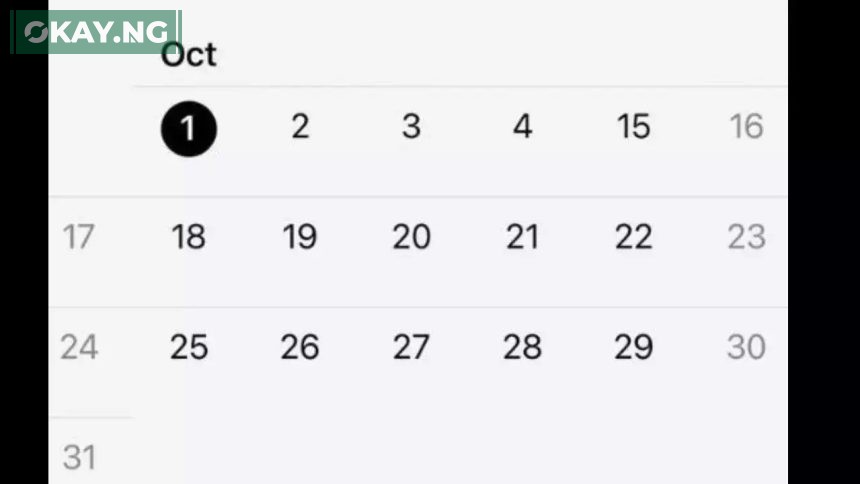Timekeeping is one of humanity’s oldest and most important endeavors. For centuries, societies have developed systems to track days, months, and years.
Yet, even these carefully constructed calendars are not immune to inaccuracies. One of the most striking examples of this occurred in October 1582, when 10 days simply disappeared from the calendar. If you’re wondering why this happened and what it means, this article will take you on a journey through history, astronomy, and religion to uncover the story behind this peculiar anomaly.
The Problem With the Julian Calendar
To understand why October 1582 is missing 10 days, we must first examine the Julian Calendar, the system in use before the reform. Introduced by Julius Caesar in 45 BCE, the Julian Calendar was revolutionary for its time. It standardized the year to 365 days and added an extra day every four years (a leap year) to account for the extra 0.25 days in the solar year.
However, the Julian Calendar had a slight flaw. The solar year—the time it takes Earth to complete one orbit around the Sun—is not exactly 365.25 days. Instead, it is approximately 365.2422 days, or about 11 minutes shorter. This small discrepancy may seem insignificant, but over centuries, it caused the calendar to drift out of sync with the natural seasons.
By the 16th century, this drift amounted to about 10 days. The spring equinox, which was supposed to fall on March 21 (as determined by the Council of Nicaea in 325 CE), was instead occurring around March 11. This misalignment had significant consequences, particularly for the Christian Church, which relied on the equinox to calculate the date of Easter, the most important celebration in the Christian calendar.
The Birth of the Gregorian Calendar
To correct the Julian Calendar’s inaccuracy, Pope Gregory XIII initiated a reform. On February 24, 1582, he issued the papal bull Inter gravissimas, which introduced the Gregorian Calendar, named in his honor. This new calendar would solve the problem in two key ways:
- Realigning the Calendar: To reset the calendar and bring it back in sync with the solar year, 10 days were removed from October 1582. In countries that adopted the Gregorian Calendar, Thursday, October 4, 1582, was followed immediately by Friday, October 15, 1582. These missing days corrected the accumulated error of the Julian Calendar since the Council of Nicaea in 325 CE.
- Refining Leap Years: To prevent future drift, the Gregorian Calendar adjusted the rules for leap years. While the Julian Calendar made every fourth year a leap year, the Gregorian system added two exceptions:
- A year divisible by 100 is not a leap year unless it is also divisible by 400.
This means that years like 1600 and 2000 are leap years, but years like 1700, 1800, and 1900 are not. This adjustment reduced the average length of a year to 365.2425 days, much closer to the actual solar year.
- A year divisible by 100 is not a leap year unless it is also divisible by 400.
Global Adoption and the “Missing Days”
The Gregorian reform was first adopted in Catholic countries, including Spain, Portugal, and Italy, in October 1582. For them, 10 days were removed from the calendar. However, other parts of the world, particularly Protestant and Orthodox countries, resisted the reform due to religious tensions and distrust of the Catholic Church.
For example, Britain and its colonies did not adopt the Gregorian Calendar until 1752. By then, the Julian Calendar’s drift had grown to 11 days, so when the change was implemented, Wednesday, September 2, 1752, was followed by Thursday, September 14, 1752. This is why many people mistakenly refer to the Gregorian reform as “missing 11 days,” even though it was originally 10 days in 1582.
In Russia, the Gregorian Calendar was not adopted until the Bolshevik Revolution in 1918, and some Orthodox Churches still use the Julian Calendar for liturgical purposes to this day.
Cultural and Social Impact of the Missing Days
The sudden removal of days caused confusion and controversy in the regions that adopted the Gregorian Calendar. Many people feared they had lost time from their lives. In Britain, for example, some reportedly protested with slogans like “Give us our 11 days!” Similarly, economic disruptions occurred as wages, rents, and contracts had to be adjusted to account for the missing days.
Despite these challenges, the Gregorian Calendar eventually became the global standard for civil use. Its accuracy and practicality ensured its widespread adoption, even in countries with different religious or cultural traditions.
Why This Matters Today
The reform of 1582 was not just about fixing a calendar—it was about humanity’s relationship with time, science, and religion. The Gregorian Calendar’s success was a testament to the importance of aligning human systems with natural phenomena. It also underscored the power of collaboration between science (astronomy, in this case) and governance to solve large-scale problems.
Today, the Gregorian Calendar remains the most widely used calendar in the world, a legacy of Pope Gregory XIII’s vision and the astronomers who advised him. And while October 1582 may be forever missing 10 days, it serves as a fascinating reminder of how deeply the flow of time is tied to both our history and our future.













